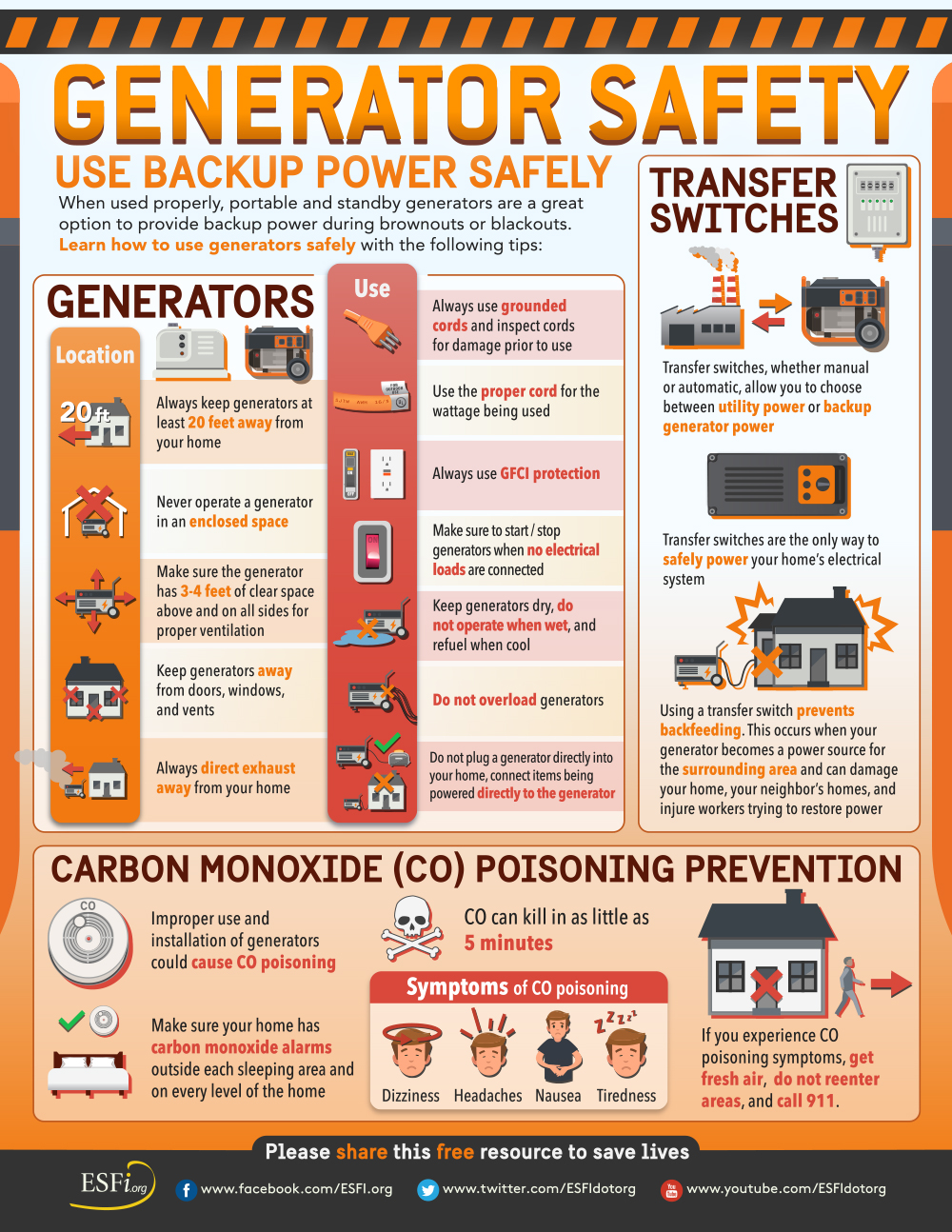
Generator Safety
When using electric generators during power outages, ensure they are correctly sized, properly installed, and operated safely according to the manufacturer’s instructions. Follow these essential safety guidelines:
- Choose the Right Size: Generators must be appropriately sized to meet the electrical demands of the appliances they power. An undersized generator can overheat, creating a fire hazard, and may damage connected appliances.
- Use Proper Cords: Plug appliances directly into the generator using a heavy-duty, outdoor-rated extension cord designed to handle the total wattage of all connected devices.
- Professional Installation for Home Connection: If connecting a generator to your home’s electrical system, hire a qualified electrician to install the unit with the correct switches and connections. Improper installation can lead to circuit overloads, fire risks, electric shocks, and serious injury or property damage.
- Prevent Back-feeding: Generators connected to a home must be installed to prevent electricity from back-feeding onto utility lines, as this can pose a severe risk to repair crews working to restore service. A professionally installed disconnect switch is essential for safety.
- Avoid Enclosed Spaces: Never operate generators in enclosed areas like garages, sheds, or porches, as this can lead to dangerous carbon monoxide buildup. Instead, place generators in open spaces with adequate ventilation while keeping them protected from water. Positioning them on a dry surface under a shelter helps prevent electrical hazards.
- Refueling and Storage: Always turn off generators before refueling to reduce the risk of fire. Store generators in a dry area to prevent moisture-related damage.
By following these guidelines, you can use electric generators effectively while prioritizing safety and protecting your home and appliances.



